One of the most important parts in a motorcycle engine and a part that relies heavily on the battery is the starter motor. What’s inside the starting motor and how does it actually start the bike?
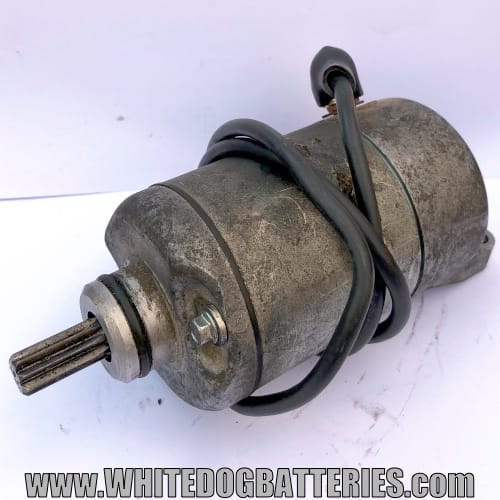
Motorcycle starter motor
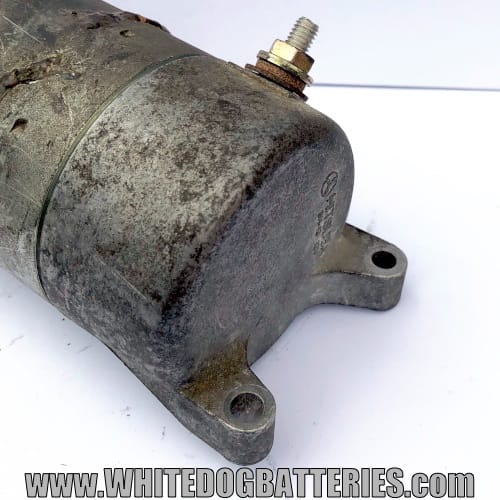
Rear mounting points on a bike start motor
The starter motor is usually secured to the bike by the front end slotting into the engine and by 2 mounting points on the rear which keep the motor tight in the engine.
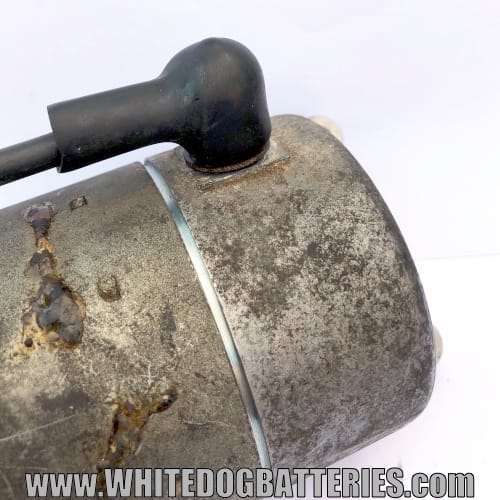
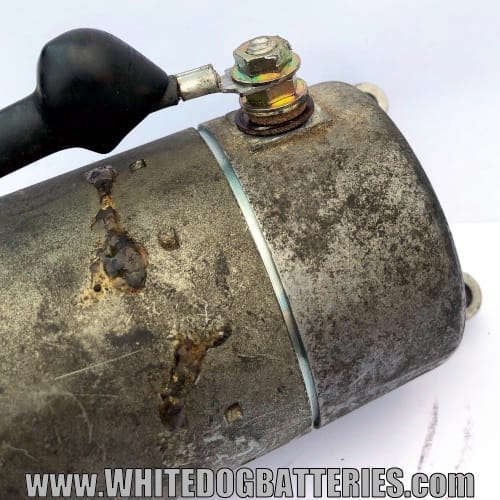
Starter motor electrical lead and connection
The starter motor is normally connected to the starter solenoid by a 12 volt wire. This wire is thicker then other wiring on the bike (e.g. lighting wires) as it takes more power to turn the starter motor over.
Note: The starter solenoid (also known as a starter relay) is basically a switch that runs between the starter motor and the battery. When the starter button is pressed, the starter solenoid kicks in and passes electricity to the starter motor so it can turn the engine over.
Starter relays (like all electrical relays) can fail with time and use so it’s always worth checking if your having starting problems.
The starter solenoid can usually be found by following the red (+ positive) lead from the battery.
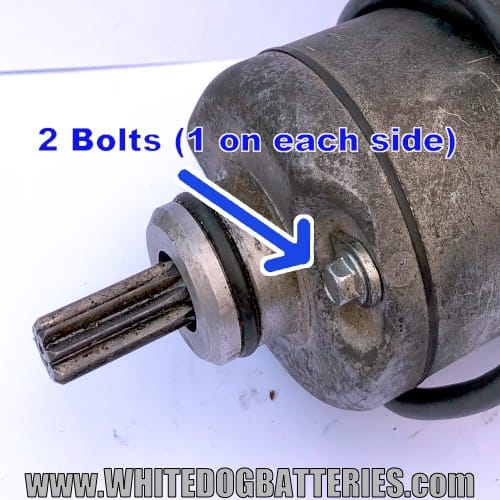
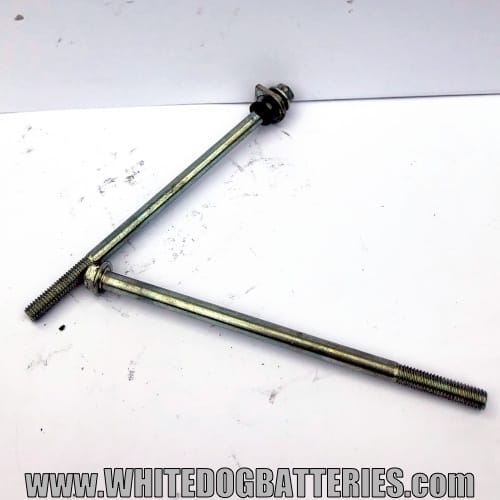
There’s usually 2 long bolts that hold the starter motor together
The starting motor is normally held together by 2 long 8 or 10mm bolts that run almost the entire length of the starter motor body.
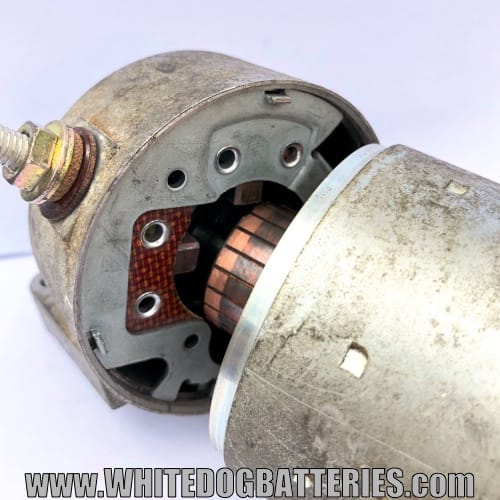
The motor can be separated apart once the bolts have been removed.
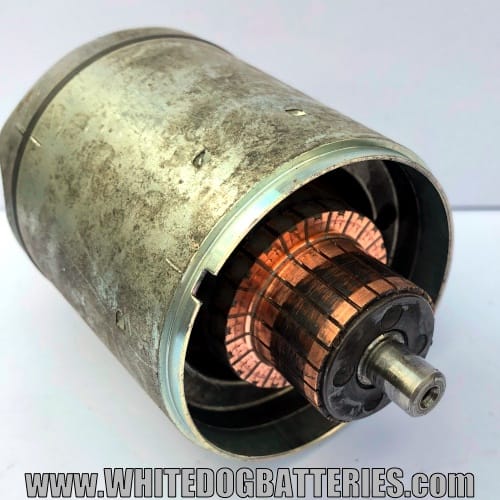
The base of the motor, this part is hidden inside the starter motor.
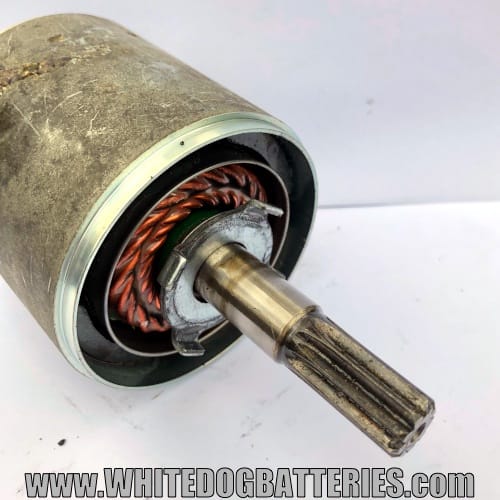
This is the part that stickes out of the starting motor and goes into the engine.
Note: the splines on the end of the starter motor can fail with age and use as they wear and cannot make a good connection with the starter sprocket mounted in the engine
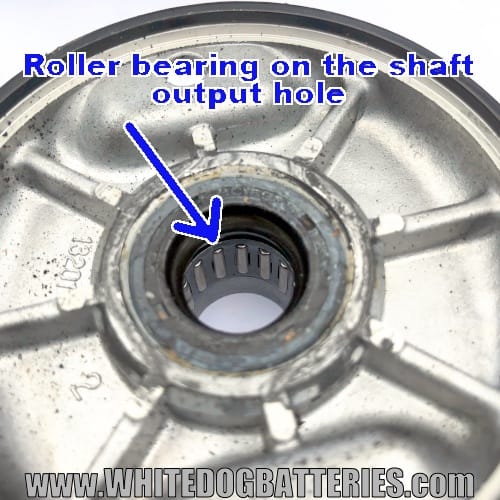
Roller bearing where the shaft exits the motor into the engine.
The starter motor is connected to the engine start sprocket by the drive splines on the starter motor shaft.
These splines can wear with use so it’s an important part to check whan buying a used starter motor.
Note: Cheaper (Chinese) bikes often use mild steel (instead of hardened steel) for the shaft and splines which can cause them to wear very quickly
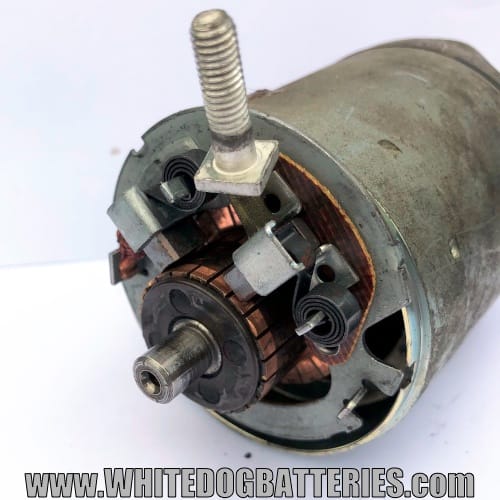
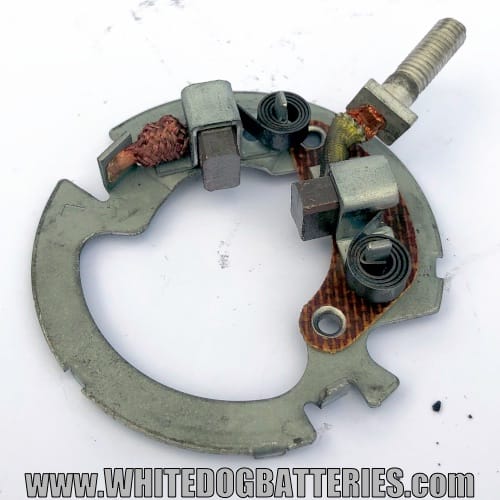
Starter motor brushes from inside the casing.
Another part that is prone to failing with use (like on all electric motors) is the starter motor brushes. These are in direct contact with the motor shaft (there’s springs that hold the brushes onto the shaft) so they can wear and become unserviceable with (alot!) of use.
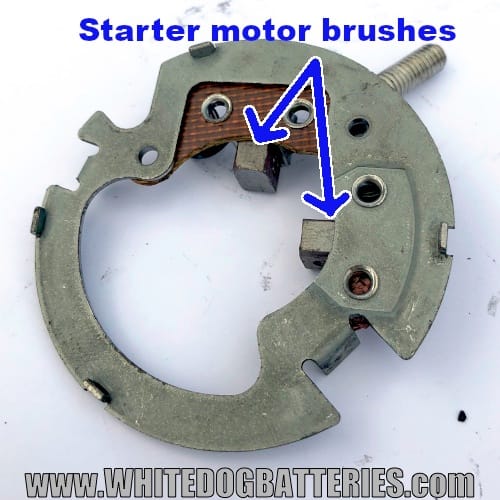
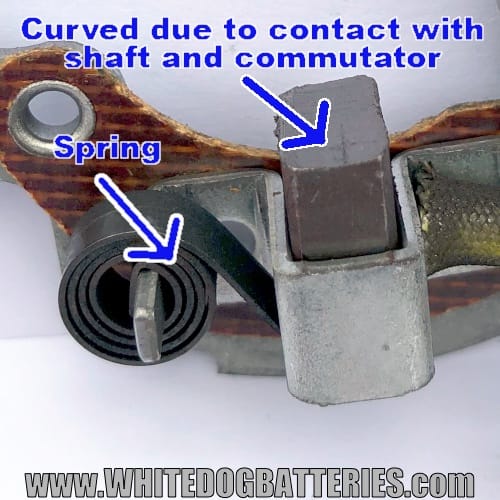
Close up pics of the starter motor brushes. Brushes are common parts which are prone to excessive wear on most household and vehicle electric motor items (e.g. washing machines, windscreen wiper motors, dishwashers, children’s toys etc)
As you can see from the pic above, the brushes develop a slightly curved edge over time from being in contact with the shaft.
With alot of use these brushes wear too much for the springs to keep them in contact with the commutator part of the shaft which can result in the motor not working.
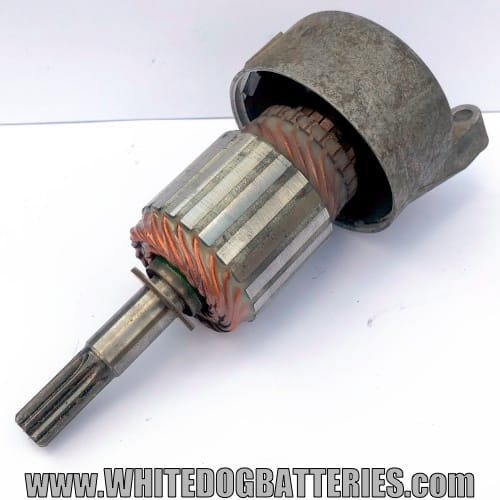
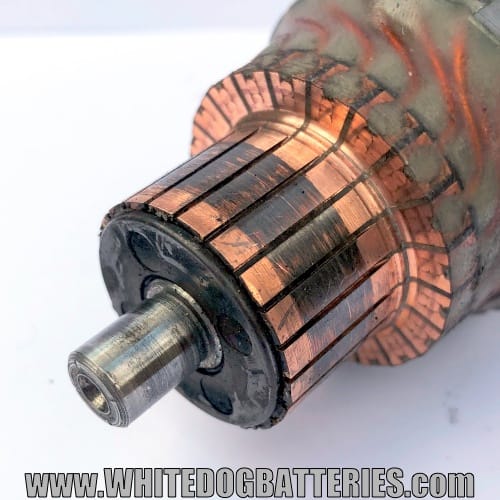
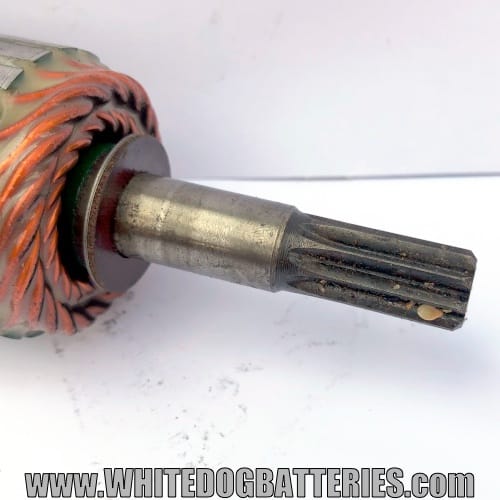
Close up of various parts of the starter motor shaft, including the shaft, rotor and commutator
So how does a starter motor work?
In very simple terms, the starter motor converts electrical energy from the bike battery into mechanical (movement) energy when the starter motor turns.
Note: Starting motors use alot of electricity from the battery to start the engine. This electricity is normally replaced by the motorbikes charging system once the engine is running
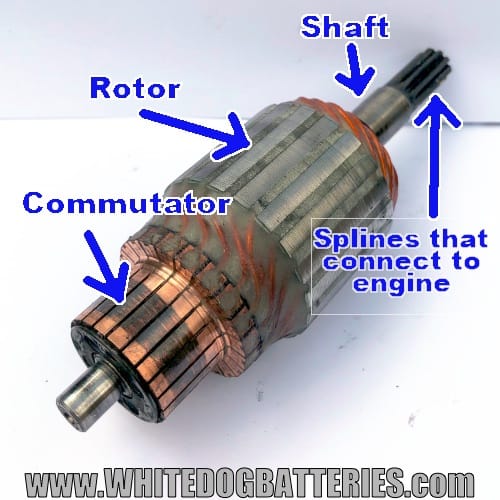
Different parts of the starter motor shaft
The starter motor uses DC electric current (Direct Current – electric current that only flows in 1 direction) to create an electromagnetic field (an electrical force to do with a parts movement) which creates + and – fields, due to the magnetic casing of the starter motor, this causes the shaft rotor to be either pushed away (like polarities repel) or pulled towards (opposite polarities attract) the casing creating a rotational movement.
Note: The above is a very simple and brief explanation, there are absolutely LOADS of blog posts, articles and videos online that explain the exact process much more in detail.
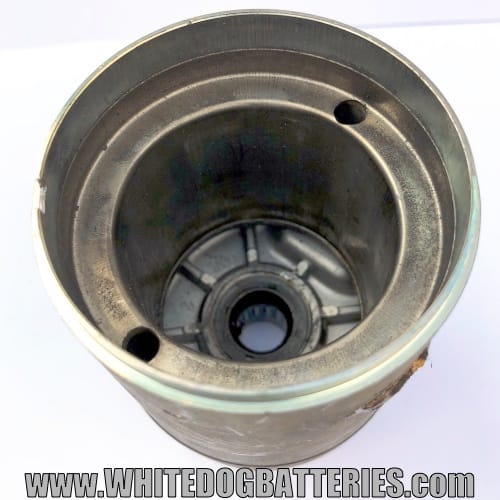
Magnetic outer main casing of the starter motor from the inside
Disclaimers:
The information provided on this page is ‘to the best of our knowledge’ and should not be taken as 100% accurate!!
To keep this page as a free resource for people to use, there are affiliate links (mainly Amazon) throughout the article. These affiliate links help maintain the cost of running this blog (basically, if you visit Amazon through one of the links and buy something, we make a few pence!).

Leave a Reply